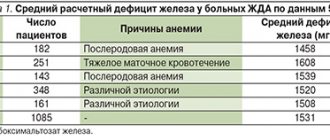Composition of Clindacin and release forms
Clindacin is a local antimicrobial drug, the action of which is ensured by the presence of clindamycin in the form of phosphate. This is a bacteriostatic antibiotic belonging to the lincosamide group. It is known for the breadth of its spectrum of action. The bacteriostatic effect is explained by stopping protein synthesis in microbial cells. This fact does not allow pathogenic flora to multiply, reduces the severity of symptoms and speeds up recovery.
It has been noted that in large dosages a bactericidal effect is possible, that is, the drug not only prevents bacteria from multiplying, but begins to destroy them. The product is effective against most pathogens, except Clostridium spp, Trichomonas vaginalis and Candida albicans.
The product is available in two dosage forms:
- vaginal suppositories;
- cream for topical use.
The manufacturer warns that to achieve the maximum possible effect, you should not use other intravaginal drugs simultaneously with Clindacin.
Effect of the drug Clindacin
Clindacin is intended for intravaginal administration. Once on the mucous membrane, suppositories soften under the influence of body temperature and gradually turn into a soft substance that envelops the walls of the vagina. The active substance is capable of being absorbed into the systemic circulation in an amount of no more than 4%-5%. The maximum concentration of the absorbed volume is reached after 1 hour and is no more than 20 ng/ml.
The bacteria that cause vaginosis are active directly on the walls of the mucous membranes. Local therapy in the form of the drug Clindacin is usually sufficient to overcome pathogenic flora, eliminate symptoms and prevent re-infections.
Clindacin B prolong vaginal cream 20 g
pharmachologic effect
Pharmaceutical group: A drug with antibacterial and antifungal effects for topical use in gynecology. Pharmaceutical action: Butoconazole is an imidazole derivative that has fungicidal activity against fungi of the genera Candida, Trichophyton, Microsporum, Epidermophyton and some gram-positive bacteria. Most effective for candidiasis. By blocking the formation of ergosterol from lanosterol in the cell membrane, it increases the permeability of the membrane, which leads to lysis of the fungal cell. Clindamycin is a bacteriostatic antibiotic from the lincosamide group, has a broad spectrum of action, binds to the 50S subunit of the ribosomal membrane and inhibits protein synthesis in the microbial cell. A bactericidal effect is possible against a number of gram-positive cocci. Active against Staphylococcus spp. (including Staphylococcus epidermidis, producing and non-producing penicillinase), Streptococcus spp. (excluding Enterococcus faecalis), Streptococcus pneumoniae, Corynebacterium diphtheriae, Mycoplasma spp., anaerobic and microaerophilic gram-positive cocci (including Peptococcus spp. and Peptostreptococcus spp.), Clostridium perfringens, Clostridium tetani, Bacteroides spp. (including Bacteroides fragilis and Prevotella melaninogenica), Fusobacterium spp., Propionibacterium spp., eubacterium and Actinomyces israelii. Most strains of Clostridium perfringens are sensitive to clindamycin, but other Clostridium spp. (including Clostridium sporogenes, Clostridium tertium) are resistant to its action, and therefore for infections caused by Clostridium spp., it is recommended to determine an antibiogram. The hydrophilic cream base provides the drug with a gel-like consistency at a temperature of 35-40°C. When used intravaginally, the cream does not melt, and therefore the active substances remain on the vaginal mucosa for 1-3 days. There is cross-resistance between clindamycin and lincomycin. Pharmacokinetics: When administered intravaginally, about 1.7% of the administered dose of butoconazole and 4% of the administered dose of clindamycin are absorbed. The maximum concentration in the blood plasma of butoconazole is reached after 13 hours and is 2-18.6 ng/ml. The maximum plasma concentration of clindamycin is 20 ng/ml. Butoconazole undergoes intensive metabolism and is partially excreted by the kidneys and intestines.
Indications
- bacterial, fungal and mixed vaginosis caused by microorganisms sensitive to the drug.
Contraindications
- Crohn's disease; - ulcerative colitis (including history); — pseudomembranous colitis (including history); - children under 18 years of age; - hypersensitivity to clindamycin, lincomycin, butoconazole or any component of the drug Clindacin B Prolong. With caution: allergic diseases, simultaneous use of muscle relaxants.
special instructions
If clinical signs of infection persist after completion of treatment, repeat microbiological testing should be performed to identify the pathogen and confirm the diagnosis. The appearance of irritation of the vaginal mucosa or pain is an indication to discontinue treatment. Vaginal cream Clindacin B prolong is not recommended for use simultaneously with other intravaginal medications.
Compound
100 g: - butoconazole nitrate 2 g - clindamycin (in phosphate form) 2 g Excipients: preservative Euxyl PE 9010 (phenoxyethanol 90%, ethylhexylglycerol 10%) - 0.45 mg, propylene glycol - 5 g, isopropyl myristate - 8 g, macrogol cetostearate ( macrogol-20 cetostearyl ether) - 2 g, cetostearyl alcohol (cetyl alcohol 60%, stearyl alcohol 40%) - 6 g, hydroxypropyl distarch phosphate - 8 g, sodium hydroxide - 0.26 g, purified water - up to 100 g.
Directions for use and doses
It is administered intravaginally using an applicator. Apply once, preferably before bedtime. The recommended dose is 1 full applicator (5 g of cream, corresponding to 100 mg butoconazole nitrate and 100 mg clindamycin). The course of treatment is daily for 3 days. Directions for use: Disposable applicators included with the Clindacin B Prolong package are intended for proper introduction of the cream into the vagina. 1. Remove the cap of the tube of cream. Screw the plastic applicator onto the threaded neck of the tube. 2. Squeezing the tube from the opposite end, gently squeeze the cream into the applicator. The applicator piston moves independently as the required volume is filled. The applicator is full when the piston reaches the stop. 3. Lying on your back, take the applicator horizontally and insert it into the vagina as far as possible, but so as not to cause discomfort. 4. Slowly press the piston all the way. 5. Carefully remove the applicator from the vagina and discard it.
Side effects
The drug Clindacin B prolong is usually well tolerated, but irritation at the injection site, burning, itching, soreness and swelling of the vaginal mucosa, pain/spasms in the lower abdomen, and the development of allergic reactions are possible.
Overdose
With intravaginal use of the drug Clindacin B prolong, an overdose has not been established.
Indications for use of Clindacin
Clindacin is prescribed for bacterial vaginosis, manifested by the following symptoms:
- burning of the mucous membranes and labia minora;
- swelling of the tissues of the genital organ;
- copious discharge of yellow or green color, with a characteristic unpleasant odor;
- painful intercourse;
- itching in the groin.
Vaginosis can occur for several reasons. But, regardless of the etiology, the source of the problem is always the proliferation of pathogenic bacteria. Microorganisms can enter the mucous membrane in different ways. One of the most common is sexual contact with a carrier partner. Men may not have symptoms indicating the presence of pathogenic flora, but pathogenic bacteria will be present on the mucous membrane of the penis. One unprotected sexual intercourse is enough for a woman to receive an infectious dose.
In addition, the spread of bacteria is facilitated by the lack of proper hygiene, which consists of:
- daily washing of the genitals with running water;
- mandatory daily change of underwear, and in case of heavy discharge during the period of ovulation, it is recommended to wear daily thin pads, which are changed several times during the day as they are filled;
- timely change of absorbent products during menstruation.
Every woman should remember that both daily and monthly discharge are an excellent breeding ground for the proliferation of pathogenic bacteria. Therefore, it is extremely important to regularly change linen and personal hygiene products to minimize the risk of infection.
In addition, proper washing technique reduces the incidence of diseases. The water should always be running. But despite the need to keep the intimate area clean, doctors do not recommend using soap too often. If a soap solution is used, it should have an acidic pH level. Under no circumstances should you douche without the specific recommendation of your doctor. Daily washing with warm running water from front to back is sufficient. You can use soap once every two days.
Excessive use of cleansers leads to an imbalance of beneficial flora, which creates a natural barrier to the spread of infection. With frequent use of soap and as a result of douching, local immunity is noticeably reduced.
Efficacy of Clindacin for bacterial vaginosis in pregnant women
The prevalence of bacterial vaginosis in women visiting the clinic is, according to various authors, from 33% to 64%.
Bacterial vaginosis is recognized as a risk factor, and sometimes one of the causes of pathology of the female reproductive system, complications of pregnancy, childbirth and the postpartum period. Studies by many authors have shown that bacterial vaginosis can lead to the development of pathological uterine bleeding, increased complications after pelvic surgery and cesarean section, premature rupture of membranes, labor anomalies, chorioamnionitis, postpartum endometritis, weight loss and pneumonia of the newborn. These circumstances dictate the need to develop new methods of treating bacterial vaginosis. A drug that combines etiological, pathogenetic symptomatic action is Clindacin (OJSC "Khimfarmkombinat AKRIKHIN". A successful combination of the components of the drug and the dosage form in the form of 2% vaginal cream with applicators provides a wide spectrum of action when applied locally.
Purpose of the study: the purpose of the study was to determine the effectiveness and safety of using the drug Clindacin before childbirth in 26 pregnant women with bacterial vaginosis.
Criteria for selecting patients for the study.
The clinical group included pregnant women:
- pregnant women between 37 and 40 weeks of pregnancy;
- with a diagnosis of bacterial vaginosis established on the basis of laboratory and clinical examination;
- who have expressed a desire, after receiving information about the examination, the medicinal effect of the drug, methods of its use and possible side effects, to undergo a course of treatment with Clindacin with subsequent monitoring of effectiveness;
- those who do not have hypersensitivity or allergies to the components of the drug.
Studies excluded:
- patients with hypersensitivity and allergy to lincosamide antibiotics;
- pregnant women with any condition that may affect study evaluation;
- pregnant women who are unable to cooperate with doctors or who interrupt the study during therapy for no reason.
Examination standard.
All pregnant women underwent the following comprehensive examination to establish a diagnosis:
- bacterioscopic - cultures for bacterial flora and sexually transmitted infections;
- molecular biological - PCR of Nachlamydia, HSV and Cytomegalovirus.
The diagnosis of bacterial vaginosis was established if a pregnant woman had the following symptoms:
- copious foamy discharge with an unpleasant odor;
- presence of key cells;
- the presence of epidermal and Staphylococcus aureus in a microbiological study;
- smear microscopy reveals the presence of Grandnerella vaginalis; Mycoplasma hominis.
- absence or significant reduction of lactobacilli.
A control study was carried out before treatment and on the 4th day after treatment.
The subjective state was assessed by a detailed history taking and targeted questioning of all patients before and after treatment. Clinical manifestations before and after treatment were assessed as follows:
- quantity, color, consistency and smell of discharge;
- condition of the mucous membrane of the vestibule and vaginal walls;
- size and condition of the inguinal lymph nodes;
- presence of contact bleeding.
Pregnant women were informed of a mandatory visit to the attending physician in the event of the first signs of an allergic reaction or other adverse reactions.
Clinical group:
26 pregnant women with full-term pregnancy were examined and treated, who were divided into two groups.
Group I - 19 pregnant patients with bacterial vaginosis in the form of a monoinfection. Patients in this group were bothered by heavy (9) or moderate (10) vaginal discharge with an unpleasant odor. The number of leukocytes in smears of the cervical canal was 30–40 (9), covering the entire field of view (8). “Key” cells were identified in all pregnant women in this group.
II - group - 7 pregnant patients with bacterial vaginosis in combination with other infections.
Microbiological examination of vaginal discharge in group II revealed: epidermal staphylococcus (2); E. Coli (4); Enterococcus faecalis (1).
Microscopic examination of the smears revealed “key” cells in all of them; Cardnerella vaginalis (2), fungi of the genus Candida (4); Mycoplasma hominis (4). All pregnant women in this group were bothered by heavy or moderate vaginal discharge with an unpleasant odor. Four pregnant women complained of a burning sensation in the vagina. The number of leukocytes in smears from the cervical canal in 6 out of 7 pregnant women in this group was completely over the entire field of view. “Key” cells were identified in all patients of this group.
In 12 pregnant women, concomitant pathology was identified: 2 - cervical erosion; recurrent miscarriage (1); primary infertility (1); threat of miscarriage (5); chronic fetal hypoxia due to fetoplacental insufficiency (4); tendency to carry the pregnancy to term (1).
Two pregnant women had a history of allergies to drugs not included in Clindacin.
Treatment method:
The recommended single dose of Clindacin (5 g of cream, corresponding to 100 mg of Clindacin) was placed in a tube for single use and inserted into the vagina before bedtime. The procedure was carried out daily for 3 days. In all cases, we used Clindacin as monotherapy; regardless of concomitant sexually transmitted infections.
Treatment results:
Analysis of clinical data from 26 pregnant women indicates the high effectiveness of the drug Clindacin in the treatment of bacterial vaginosis in the third trimester of pregnancy (Table 1)
During the treatment, pregnant women subjectively noted a decrease in pathological vaginal discharge. In group I, patients after treatment noted an improvement in their well-being; discharge characteristic of BV was absent during examination; 6 pregnant women noted a change in the nature of discharge after the first procedure (Table 3)
In group II, pregnant women noted an improvement in their health and the disappearance of a burning sensation in the vagina. The abundant pathological discharge and unpleasant odor characteristic of BV also disappeared.
All pregnant women gave birth independently, on time. Key cells were not found in any pregnant woman from these groups.
There were no anomalies of labor in the pregnant women of the examined group. The course of the postpartum period was complicated by hematometra in 1 pregnant woman, and 1 pregnant woman underwent prophylactic treatment of postpartum endometritis. In the examined group, all newborns were assessed on the Apgar scale from 7 to 8 points; intrauterine infection was not diagnosed in any of the newborns.
Advantages of the drug:
The advantages of Clindacin, in our opinion, are:
- possible use in the preparatory period for childbirth;
- no contraindications;
- good tolerability of the drug;
- convenient form and method of application;
- rapid achievement of clinical effect;
- high antimicrobial activity when applied topically.
Thus, clinical studies of Clindacin have shown that this drug is effective for the treatment of bacterial vaginosis and the preparation of pregnant women for labor.
Table 1 Clinical results of treatment of bacterial vaginosis in pregnant women of group I.
| Clinical symptoms | Before treatment | After treatment |
| 1. Copious discharge characteristic of bacterial vaginosis | 9 | none |
| 2. Moderate discharge characteristic of bacterial vaginosis | 10 | none |
| 3. The number of leukocytes in smears from the cervical canal | 9 | N |
| 4. "Key cells" | 19 | none |
Table 2 Data from bacterial examination of vaginal contents of pregnant women of group II before and after treatment
| Microorganisms | Number of identified patients | Art. examined CFU/ml | ||
| before treatment | after treatment | before treatment | after treatment | |
| 1. Bacteria of the genus Staphyloccocus -st. epidermidis | 2 | 104-106 | ||
| 2. Bacteria of the genus Enterobacterium - E. Coli | 4 | 1 | 104-106 | 102-104 |
| 3. Bacteria of the genus Enteroccocus -enteroccocus facialis | 1 | 104-106 | ||
Table 3 Microscopic characteristics of vaginal microcenosis before and after treatment
| Microorganisms | Number of detections | |
| before treatment | after treatment | |
| 1. “Key” cells | 7 | No |
| 2. Gardnerella vaginalis | 2 | 1 |
| 3. Micoplasma hominis | 4 | 1 |
| 4. Fungi of the genus Candida | 4 | 1 |
Clindacin suppositories - without a prescription, how to use
Clindacin suppositories are intended for insertion into the vagina. The dosage is 1 suppository per day. Use the product immediately before bedtime. The suppository must be inserted as deeply as possible so that the active substance can contact the mucous membrane of the most distant areas.
It is convenient to do this while lying on your back with your knees bent. It is not advisable to use suppositories in the morning and during the day, since after entering the vagina the suppository changes from a solid state to a liquid state. A few minutes after administration, all the product will flow out and will not have the desired therapeutic effect. For one course of administration, 1 package consisting of three suppositories is enough.
Clindacin B prolonged cream vag. (2%+2% tube 20g)
A country
Russia
The country of production may vary depending on the batch of goods. Please check with the operator for detailed information when confirming your order.
Active substance
Butoconazole + Clindamycin
Compound
Tube 20 g Butoconazole nitrate (in terms of 100% substance) 2 g, clindamycin phosphate (in terms of 100% substance) 2.376 mg. Excipients: preservative Euxyl PE 9010 (phenoxyethanol 90%, ethylhexylglycerol 10%) - 0.5 g, equivalent 0.45 g phenoxyethanol, propylene glycol - 5 g, isopropyl myristate - 8 g, macrogol cetostearate (macrogol-20 cetostearyl ether) - 2 g, cetostearyl alcohol (cetyl alcohol 60%, stearyl alcohol 40%) - 6 g, hydroxypropyl distarch phosphate - 8 g, sodium hydroxide - 0.26 g, purified water - up to 100 g. Vaginal cream 2% + 2% from almost white to white with a grayish tint, with a specific odor.
pharmachologic effect
Pharmacodynamics Butoconazole is an imidazole derivative that has fungicidal activity against fungi Candida, Trichophyton, Microsporum, Epidermaphyton and some gram-positive bacteria. It is most effective against candidiasis. By blocking the formation of ergosterol from lanosterol in the cell membrane, it increases the permeability of the membrane, which leads to lysis of the fungal cell. Clindamycin is a bacteriostatic antibiotic from the lincosamide group, has a wide spectrum of action, binds to the 50S subunit of the ribosomal membrane and suppresses protein synthesis in the microbial cage. A bactericidal effect is possible against a number of gram-positive cocci. In vitro, the following microorganisms that cause bacterial vaginosis are sensitive to clindamycin: Gardnerella vaginalis, Mobiluncus spp., Mycoplasma hominis, Bacteroides spp., Peptostreptococcus spp. The hydrophilic cream base provides the drug with a gel-like consistency at a temperature of 35 -40°C. When used intravaginally, the cream does not melt, due to which the active substances remain on the vaginal mucosa for 1-3 days. There is cross-resistance between clindamycin and lincomycin.
Indications for use
Bacterial, fungal and mixed vaginosis caused by drug-sensitive microorganisms.
Mode of application
Administer intravaginally using an applicator, 1 time per day, preferably before bedtime. The recommended dose is 1 full applicator (5 g of cream, which corresponds to 100 mg of butoconazole nitrate and 100 mg of clindamycin). The course of treatment is daily for 3 days. Directions for use One-time use The applicators included with the package are designed for proper insertion of the cream into the vagina.1. Remove the cap of the cream tube. Screw the plastic applicator onto the threaded neck of the tube.2. Squeeze the tube from the opposite end and gently squeeze the cream into the applicator. The applicator piston moves independently as the required volume is filled. The applicator is full when the piston reaches the stop.3. Lying on your back, take the applicator horizontally and insert it into the vagina as far as possible, but so as not to cause discomfort.4. Slowly press the piston all the way.5. Carefully remove the applicator from your vagina and discard it.
Interaction
There is cross-resistance between clindamycin and lincomycin. In vitro, antagonism between clindamycin and erythromycin has been demonstrated. It has been established that clindamycin, when administered systemically, disrupts neuromuscular transmission and, therefore, can enhance the effect of peripherally acting muscle relaxants, so the drug should be used with caution in patients receiving drugs of this group. Combined use with other drugs for intravaginal administration is not recommended. Incompatible with solutions containing B complex vitamins, aminoglycosides, ampicillin, calcium gluconate and magnesium sulfate.
Side effect
The drug is usually well tolerated, but irritation at the injection site, burning, itching, soreness and swelling of the vaginal mucosa, pain/spasms in the lower abdomen, and the development of allergic reactions are possible. The safety of clindamycin vaginal cream was assessed both in non-pregnant patients and in patients during II and III trimesters of pregnancy. Adverse drug reactions registered with the use of clindamycin, vaginal cream. Determination of the frequency of adverse reactions: very often (? 1/10), often (from? 1/100 to Contraindications - hypersensitivity to clindamycin, lincomycin, butoconazole or any component of the drug; - Crohn's disease; - inflammatory bowel diseases (Crohn's disease, ulcerative, pseudomembranous and antibiotic-associated colitis (including history)); - age under 18 years; With caution: allergic diseases, simultaneous use of muscle relaxants. Use during pregnancy and lactation Use of the drug during pregnancy and lactation is possible only if the potential benefit to the mother outweighs the risk to the fetus or child. Adequate controlled studies on the use of the drug in the first trimester of pregnancy have not been conducted, therefore Clindacin® B prolong can be prescribed women in the first trimester of pregnancy only for absolute indications, i.e. when the potential benefit of drug therapy for the mother outweighs the potential risk to the fetus. In animal studies, when clindamycin was administered subcutaneously or orally, no negative effects on the fetus were found, except when the drug was taken in doses toxic to the mother. When clindamycin was used intravaginally in the second or third trimester of pregnancy, no increase in the incidence of congenital anomalies of the fetus was observed. Abnormal birth occurred in 1.1% of women compared with 0.5% in the placebo group when clindamycin vaginal cream was used in the second trimester for 7 days. The use of the drug in the II-III trimester of pregnancy is possible if the potential benefit to the mother outweighs the risk to the fetus. It is not known whether clindamycin is excreted in breast milk after intravaginal use. Clindamycin is found in breast milk after oral or parenteral administration, so during breastfeeding the drug should either be discontinued or breastfeeding should be discontinued, taking into account the importance of the drug for the mother.
Overdose
When using the drug intravaginally, an overdose has not been established. Absorption of clindamycin is possible in quantities sufficient to cause systemic reactions. Accidental exposure of the drug to the gastrointestinal tract can also cause systemic effects similar to those that occur after oral administration of clindamycin in therapeutic doses. Possible systemic side effects include diarrhea, hemorrhagic diarrhea, including pseudomembranous colitis (see sections “Side effects” and “Special instructions”). Treatment: symptomatic and supportive.
special instructions
Before prescribing the drug, Trichomonas vaginalis, Chlamidia trachomatis, Neisseria gonorrhoeae and Herpes simplex virus, which often cause vulvovaginitis, should be excluded using appropriate laboratory methods. Intravaginal use of clindamycin can lead to increased growth of insensitive microorganisms, especially yeast-like fungi. The use of clindamycin (as with almost all antibiotics) orally or parenterally is associated with the development of severe diarrhea and, in some cases, pseudomembranous colitis. If severe or prolonged diarrhea develops, the drug should be discontinued and, if necessary, appropriate diagnostic and therapeutic measures should be taken. Patients should be warned that during drug therapy they should not engage in sexual intercourse. Vaginal cream is not recommended for use simultaneously with other intravaginal medications. Use of the drug during menstruation is not recommended. The start of therapy should be delayed until the end of menstruation. The drug contains components that can reduce the strength of latex or rubber products, therefore the use of condoms, vaginal contraceptive diaphragms and other latex products for intravaginal use during drug therapy and within 72 hours after use is not recommended If clinical signs of infection persist after completion of treatment, a repeat microbiological examination should be performed to identify the pathogen and confirm the diagnosis. Cetostearyl alcohol included in the drug can cause local skin reactions (rash, contact dermatitis). The appearance of irritation of the vaginal mucosa or painful sensations is an indication for discontinuation of treatment. Effect on the ability to drive vehicles and operate machinery There is no reason to believe that the use of the drug Clindacin® B Prolong vaginal cream can affect the ability to drive a car and operate machinery.
Dispensing conditions in pharmacies
On prescription
Clindacin cream - according to prescription, method of application
Cream, unlike suppositories, can only be purchased with a prescription. It is inserted into the vagina using a special applicator. It is recommended to take 100 mg of cream one time. The course of treatment can vary from 3 to 7 days, depending on the severity of the disease and the severity of symptoms.
It is important not to stop treatment if all signs of the disease have disappeared after the first dose. Antibacterial therapy involves a course approach. For this category of drugs, the minimum period of use is 3 days. If therapy is interrupted, resistance of microorganisms to the active substance may develop.










